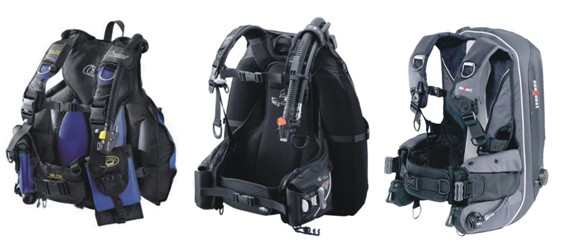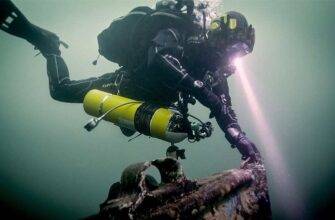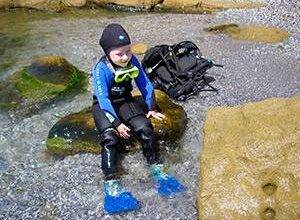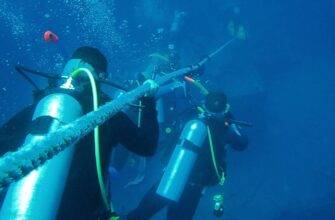
The BCD on the front is similar to a life jacket and is worn over the head. The BCD on the back is behind the back and the BCD for diving vest-type is worn like a jacket without arms, with part of the BCD in the diver’s front and part in the back. Today, the vest-type BCD is the most popular.
Features .
Regardless of the type, a BCD should have five features necessary for scuba diving:
Contain enough air to provide adequate buoyancy to your gear at the surface.
Must have a large diameter inflation and deflation hose to allow air to escape easily.
Have a low-pressure air supply system to slowly inflate the BCD directly from the cylinder. Note: Your BCD, when training in a confined water area, will be equipped with it. This system should be easy to find and easy to operate.
Have a fuse to prevent the BCD from bursting if it is accidentally overfilled.
Its configuration and straps should be comfortable to wear and prevent the BCD from being pushed up around the neck when inflated.

The BCD should fit well to provide the most streamlined fit. Pockets, a surface whistle, hose restraints, and rings for gear accessories are also desirable.
Materials – Modern BCDs can have an inner tube or be tubeless.
BCDs with an inner chamber consist of an inner bag (usually polyurethane plastic) containing air, and an outer bag of nylon sheathing that protects the inner chamber from cuts, against abrasion. Tubeless BCDs are usually made of a rubber-coated material that serves both to retain air and to protect against cuts, punctures, and abrasion.
Preparation for Use
The BCD requires proper fitting before use. When a BCD is too heavy it can rotate around your body, causing discomfort. A BCD that is too tight is also uncomfortable, especially when fully inflated.
The buoyancy compensator, a front-facing BCD (which does not have a built-in backrest), is worn before the dive kit is put on. A vest-type BCD and a backward-facing BCD are worn at the same time as the scuba kit.
Scuba Kit – Prepare the back rest straps before putting on the scuba kit. If shoulder straps are available, all quick-release straps should be buckled and the straps should fit approximately your size. The waist belt should be unbuckled before you put on the set.
When you put the harness on for the first time, your instructor will probably ask you to do this while standing in shallow water. Before your partner releases all of the weight of the scuba kit on your back, you should straighten any wrapped straps and straps and release any hoses or equipment parts caught under them. Your partner will then lower the kit onto your back and help you find both ends of the waist strap.
Now, bend forward and balance the cylinder on your back to release tension from the securing straps.
Make sure the waist strap opens to the left side.
After securing the cylinder in place, straighten up and tilt your head back and check the position cylinder height. If your head is touching the valve, the cylinder is probably sitting too high on the backrest and should be moved. Remove the cylinder and move the backrest higher.
If using a front-facing BCD, connect the hose to the low-pressure inflator after you put on the set and adjusted its position.
If you are using a vest-style BCD or a rear-facing BCD, attach it to the cylinder before you start the fitting. Determine how much you should loosen or tighten the straps.
Then, with the help of a partner, put it on and make the final adjustment so that the BCD sits snugly while at the same time allowing you to easily turn from side to side and lean forward. Finally, inflate the BCD. Even when fully inflated, the BCD should not restrict your movements.
Weight Belt
Depending on which type of BCD and scuba kit you use, your chance of putting on the weight belt before or after putting on the scuba kit. Regardless of whether you put on the weight belt before or after putting on the scuba kit, you should be able to remove it quickly and easily.
Care of the BCD.
In addition to rinsing, drying and proper storage out of direct sunlight, BCD care requires two additional, essential rules:
1) You should rinse not only the outside but also the inside of the BCD with fresh water. (To rinse the inside, fill the BCD one-third full with fresh water through the hose and then blow air into it. Shake the BCD and drain all the water through the inflator).
2) Store the BCD partially inflated.
Some BCDs require additional care.
Scuba Systems
The scuba hose allows you to extend your time underwater by using a portable air supply. The scuba hose is reliable and easy to use equipment.
It consists of a cylinder (a high pressure cylinder with compressed air, never oxygen), a valve (to turn the air supply on and off), a backrest (to securely fasten the cylinder to the diver’s back), a regulator (to provide a controlled amount of air during breathing in) and underwater pressure gauge (for determining the air reserve).
Read More:




